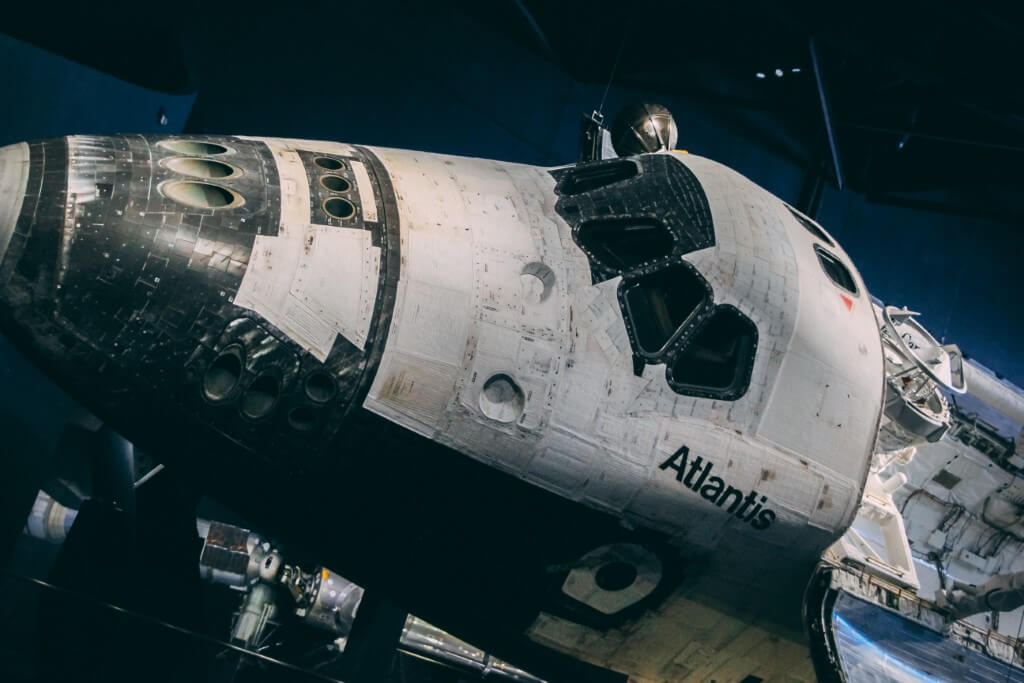How GPS Works & Why Some Devices Fail
The Global Positioning System (GPS) has become an integral part of our lives, guiding us on our journeys, assisting in precise timekeeping, and serving various industries. But how did this remarkable technology come into existence? In this article, we will unravel the fascinating history of GPS, from its humble beginnings to its widespread applications today.
The story of GPS traces back to the launch of the Soviet satellite Sputnik on October 4, 1957. As the world watched this small satellite orbiting Earth, scientists worldwide became intrigued by the possibilities it presented. Among these curious minds were two physicists from Johns Hopkins University, George Weiffenbach and William Guier, who would play a pivotal role in the development of GPS.
Weiffenbach and Guier realized that by studying the orbits and signals emitted by Sputnik and subsequent satellites, they could precisely determine the satellites’ positions using a phenomenon known as the Doppler shift. This was made possible by the high velocity of these satellites and the unique characteristics of their signal transmissions.
Soon after their breakthrough, Frank McClure, another individual associated with Johns Hopkins University, approached Weiffenbach and Guier with an intriguing proposal—to investigate the possibility of reverse engineering this concept. In a relatively short period, they determined that it was indeed feasible to determine one’s own location by studying the signals received from a moving satellite, combined with knowledge of the satellite’s known orbit. This revelation ignited a spark of innovation.
Several navigation systems were proposed and, in some cases, implemented in the following years. By 1964, the Navy’s Navigation Satellite System, also known as the Navy Transit Program, was fully operational and played a significant role in shaping the GPS we know today. This technology theoretically could pinpoint a submarine or ship’s location within 25 meters. However, location updates were only available approximately once an hour, and the acquisition process took around 10-15 minutes. If the vessel was in motion, the accuracy would decrease by approximately one nautical mile for every five knots of speed.
Timation, another crucial technology in GPS development, relied on ground-based and satellite-based quartz clocks to determine the observer’s location. Initially, the accuracy was only about 0.3 nautical miles, and it required approximately 15 minutes of data reception to achieve this precision. Subsequent improvements, including the use of atomic clocks in testing, significantly enhanced its performance. However, Timation was on the verge of becoming obsolete.
In the early 1970s, there was a proposal to create a more robust navigation system that would build upon earlier technologies. This system, known as the Navigation System Using Timing and Ranging, or Navstar-GPS, aimed to combine elements from systems like Transit and Timation to create a comprehensive solution.
By 1983, the United States had launched the first prototype satellites for GPS, marking a significant milestone in the system’s development. While it was not yet fully operational, testing and deployment were well underway.
A pivotal moment in GPS history occurred in 1983 during Korean Air Lines Flight 007’s ill-fated journey. The flight, originating from New York and bound for Seoul, South Korea, with a stopover in Anchorage, Alaska, faced an unexpected issue with its autopilot.
This malfunction caused the aircraft to inadvertently enter Soviet airspace, resulting in tragic consequences. While the modern GPS system is unrelated to this incident, it serves as a reminder of the critical importance of accurate navigation systems, such as the one that would later become GPS.
The Inner Mechanisms
Now that we’ve explored the historical roots of GPS, let’s delve into the inner workings of this groundbreaking technology. Understanding how GPS operates is key to appreciating its many practical applications.
At the heart of the GPS system is a constellation of satellites orbiting Earth. These satellites are strategically positioned in space to ensure global coverage. As of the time of writing, there are approximately 24 operational GPS satellites in orbit.
The fundamental principle behind GPS is triangulation. To determine a receiver’s position on Earth’s surface, it needs signals from at least three GPS satellites. Each satellite broadcasts a unique signal containing precise timing information and its orbital parameters.
When a GPS receiver receives signals from multiple satellites, it calculates the distance to each satellite based on the time it took for the signals to travel from the satellite to the receiver. Since the speed of light is constant, the receiver can convert these time measurements into distances.
Once the receiver has determined its distance from at least three satellites, it can use a process called trilateration to pinpoint its exact location. Trilateration involves finding the intersection point of three spheres, each centered on one of the satellites. The point where these spheres intersect represents the receiver’s coordinates.
GPS not only provides accurate positioning but also serves as a reference for precise timekeeping. Each GPS satellite contains multiple atomic clocks, which are incredibly accurate timekeepers. The satellites transmit their time data along with their location information, allowing GPS receivers to synchronize their internal clocks with the highly precise GPS time.
GPS Applications
GPS technology has transcended its initial purpose of navigation and has become an indispensable tool in various fields. Let’s explore some of the diverse applications of GPS:
GPS is the backbone of location-based services, ranging from mapping and navigation apps to ride-sharing platforms. It enables users to find directions, locate businesses, and share their real-time positions with others.
Farmers use GPS for precision agriculture, allowing them to optimize crop planting, monitor soil conditions, and apply fertilizers and pesticides with exceptional accuracy. This not only increases crop yields but also minimizes environmental impact.
GPS technology is instrumental in environmental research, aiding in the tracking of wildlife migrations, studying glacier movement, and monitoring deforestation. It provides valuable data for conservation efforts and climate change studies.
During natural disasters and emergencies, GPS plays a crucial role in coordinating rescue and relief efforts. It helps responders locate affected areas, plan evacuation routes, and manage resources efficiently.
GPS has significant military applications, enabling precise navigation, targeting, and communications for armed forces worldwide. The U.S. Department of Defense operates a more accurate military version of GPS known as NAVSTAR-GPS.
Aerospace industry relies on GPS for aircraft navigation and control, enabling safer and more efficient air travel. GPS also plays a crucial role in space exploration and satellite operations.
Land surveyors and geodesists use GPS technology to precisely measure land boundaries, map terrain, and monitor tectonic plate movements. It has revolutionized the field of geospatial data collection.
Companies with fleets of vehicles use GPS to track their assets, optimize routes, monitor driver behavior, and improve fuel efficiency. This results in cost savings and enhanced operational efficiency.
From Selective Availability to Modernization
Over the years, GPS has evolved and undergone significant improvements. One notable milestone was the discontinuation of Selective Availability (SA) in 2000. SA was a deliberate degradation of GPS accuracy imposed by the U.S. Department of Defense to prevent civilian users from obtaining highly precise positioning information. Its removal allowed civilian GPS receivers to achieve much greater accuracy.
The modernization of GPS is an ongoing process. The U.S. government is continually upgrading the system to enhance its accuracy, reliability, and robustness. Some key developments include:
New Satellites: The introduction of modernized satellites, such as the GPS Block III series, provides improved signals and greater resistance to jamming.
L2C Signal: The addition of the L2C signal on some GPS satellites enhances civilian user capabilities, making it easier to acquire and track signals in challenging environments.
Galileo and GLONASS Integration: Many GPS receivers can now utilize signals from other global navigation systems, such as the European Galileo and Russian GLONASS, for improved accuracy and availability.
Improved Anti-Jamming: GPS modernization efforts include enhanced anti-jamming capabilities to protect against deliberate interference.
Augmentation Systems: Systems like the Wide Area Augmentation System (WAAS) and the European Geostationary Navigation Overlay Service (EGNOS) provide correction data to further enhance GPS accuracy for specific regions.
While GPS has revolutionized terrestrial navigation, its applications are extending beyond Earth’s atmosphere. Emerging technologies and innovations are paving the way for GPS to play a role in space exploration, satellite constellations, and beyond.
NASA and other space agencies are exploring the use of GPS technology for navigation and positioning in deep space missions. By extending the reach of GPS beyond Earth’s orbit, spacecraft can more accurately navigate through the cosmos.
Private companies like SpaceX, OneWeb, and Amazon’s Project Kuiper are launching megaconstellations of satellites to provide global internet coverage. GPS technology plays a critical role in coordinating the precise positioning and orbital management of these satellite fleets.
GPS is being combined with Earth-observing satellites to monitor environmental changes, track climate variables, and study geological phenomena. This integration enhances our understanding of the planet and its dynamic processes.
The rise of autonomous vehicles and drones relies heavily on GPS for navigation and obstacle avoidance. As these technologies advance, GPS will continue to be a linchpin for safe and efficient transportation systems.
The Global Positioning System has come a long way from its origins in the tracking of Soviet satellites. It has evolved into a ubiquitous technology with applications spanning navigation, agriculture, disaster response, military operations, and beyond. GPS not only revolutionizes the way we navigate but also plays a pivotal role in scientific research and technological advancements.
As we look to the future, the continued evolution of GPS promises to open new frontiers, both on Earth and in the cosmos. From guiding autonomous vehicles to aiding space exploration, GPS remains at the forefront of innovation, making our world more connected and our journeys more precise than ever before. The story of GPS is a testament to human ingenuity and the relentless pursuit of accurate navigation and positioning, and it continues to unfold with each passing satellite launch and technological breakthrough.

